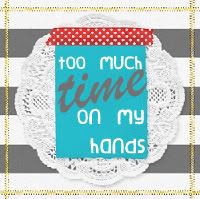Multigrain, wholegrain, fiber, wheat....very deceptive wording. Pay attention to what you are buying at the grocery store! Here is a great guide from Fitness Magazine:
"Research shows that filling up on
foods with fiber can boost your health, keep you from
overeating, and help you lose weight. The average American woman consumes about
10 to 15 grams of fiber a day, about half of what's needed to meet the basic
recommendation of 25 grams. And experts say that more is even better -- about
30 to 40 grams a day, according to David L. Katz, MD, MPH, an associate
professor adjunct of public health and director of the Prevention Research
Center at Yale University School of Medicine.
But before you put that healthy-looking loaf of
bread in your shopping cart, be sure you know what you're getting, advises
FITNESS advisory board member Kathy McManus, RD, director of nutrition at
Brigham and Women's Hospital in Boston. Read the label
carefully -- and check the fiber content. In bread, for
instance, look for at least 3 grams of fiber per serving (one brand we like:
Nature's Own 12 Grain). Choose cereal with a minimum of 2 grams per 100
calories. Other label buzzwords to watch for:
"Whole," as in "100 percent whole
wheat" or "whole-grain oats" Ideally, the first
ingredient listed should be a whole grain.
"Excellent source of fiber" This
means you're getting at least 5 grams of fiber in every serving, while
"good source" means that one serving contains at least 2.5 grams
of fiber.
"Graham flour" A type
of whole wheat flour. So, yes, it's whole grain. But check the fiber content.
"Whole-grain food" Each
serving must contain at least 51 percent whole grains. But, depending on the
product, the amount of fiber may still be low. For instance, breads contain
more water than cereals do, so even when they're whole-grain, they won't
necessarily contain much fiber. Always check the label.
"Made with whole grains" If the
grains in question appear far down on the ingredients list, put the product
back on the shelf.
"Multigrain" The food
is made with more than one type of grain, but not necessarily whole grains.
Check the ingredients list and the fiber content.
"100 percent wheat" If it
doesn't say "whole," it's refined flour, which means all the fiber
and nutrients were stripped away in processing.
"Enriched" This
term indicates that some of the vitamins have been added back after processing
-- but the fiber hasn't. Skip it."
Sources: Fitness Magazine, Shine
Sources: Fitness Magazine, Shine















No comments:
Post a Comment